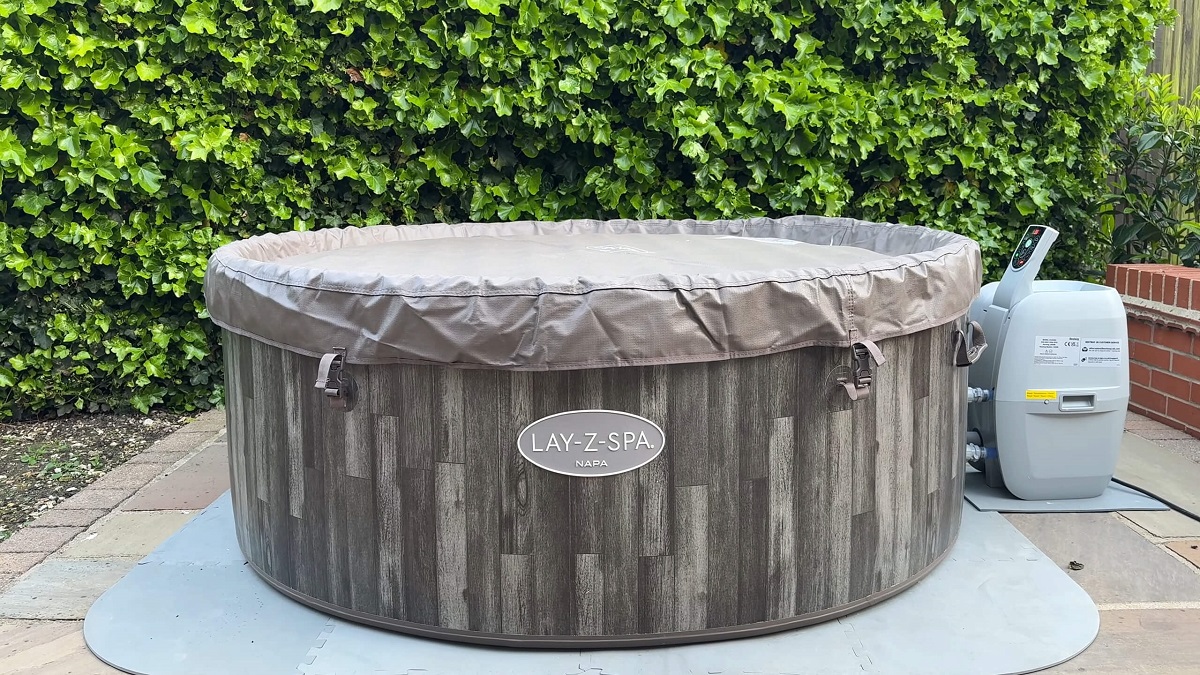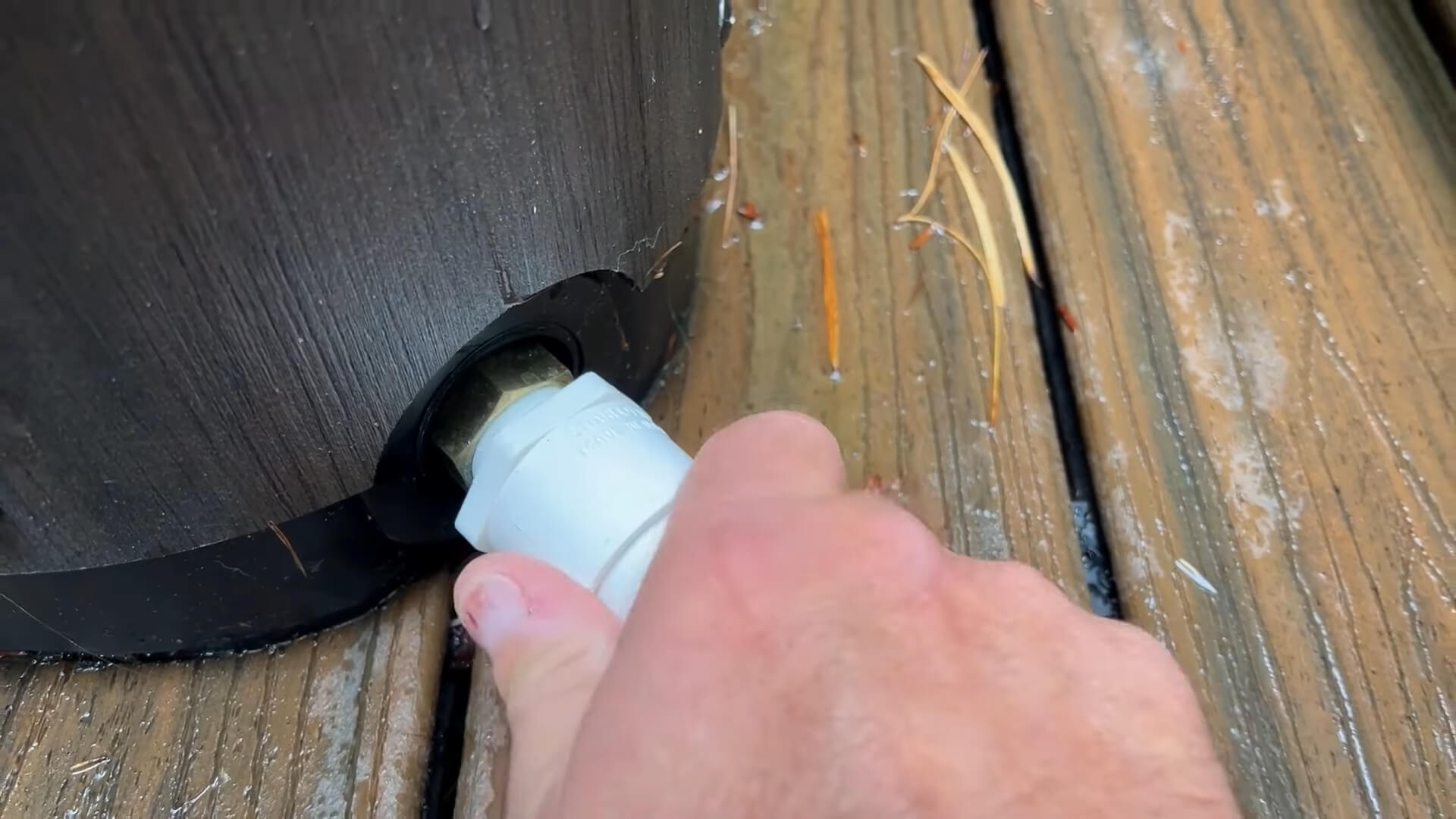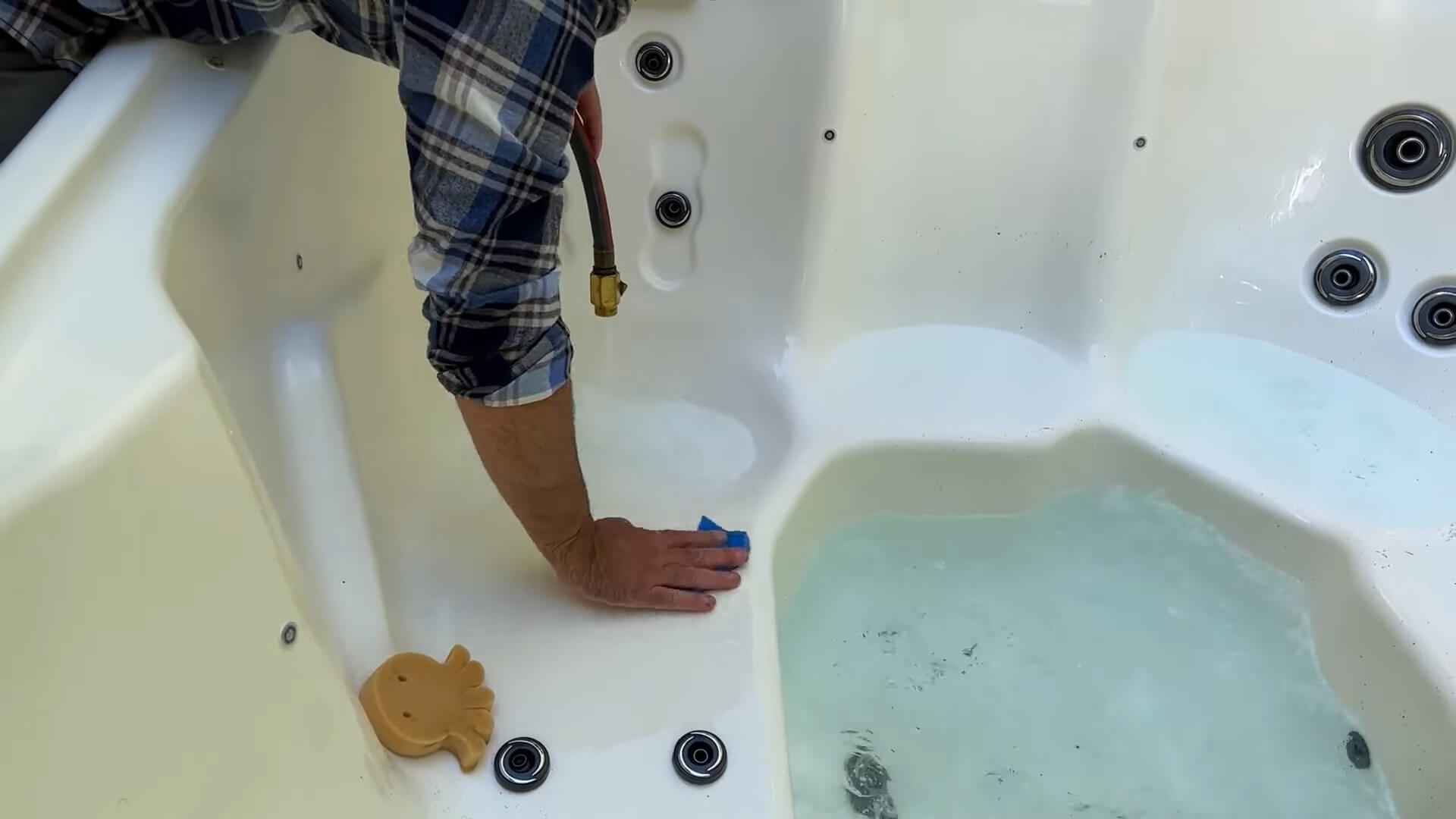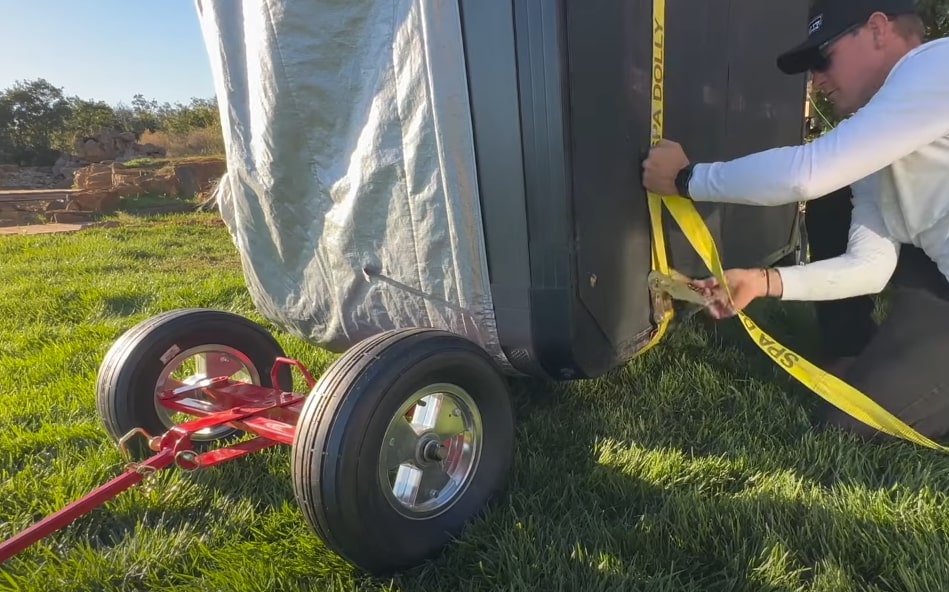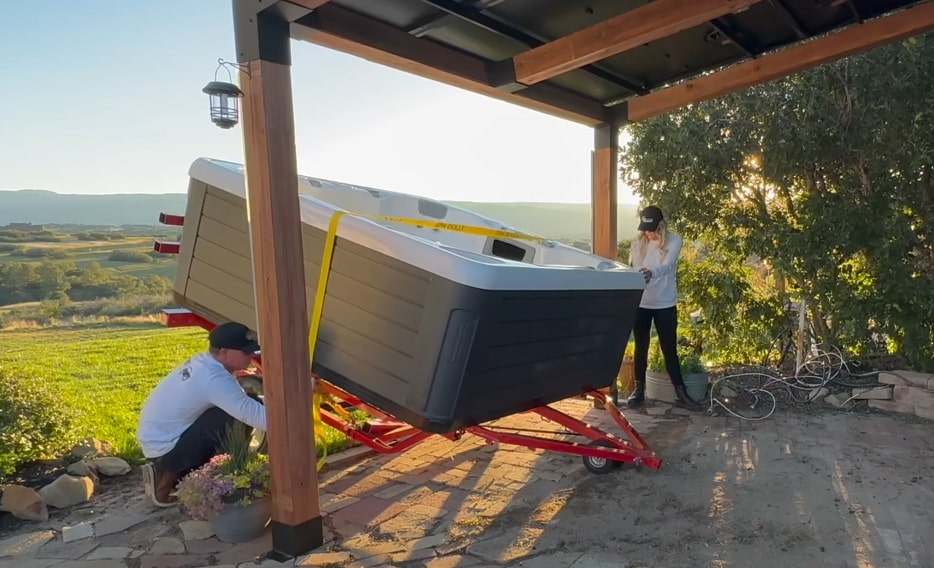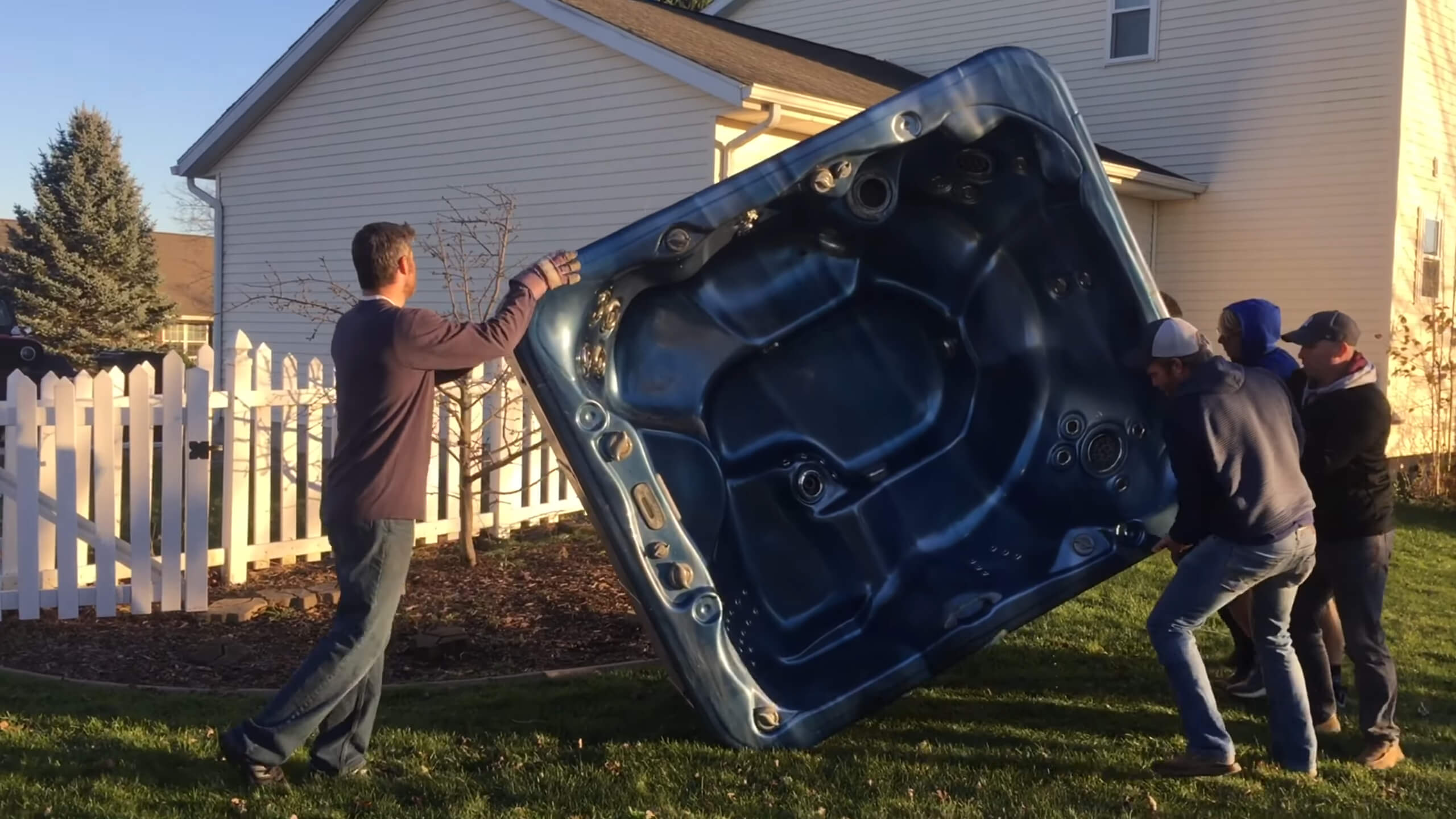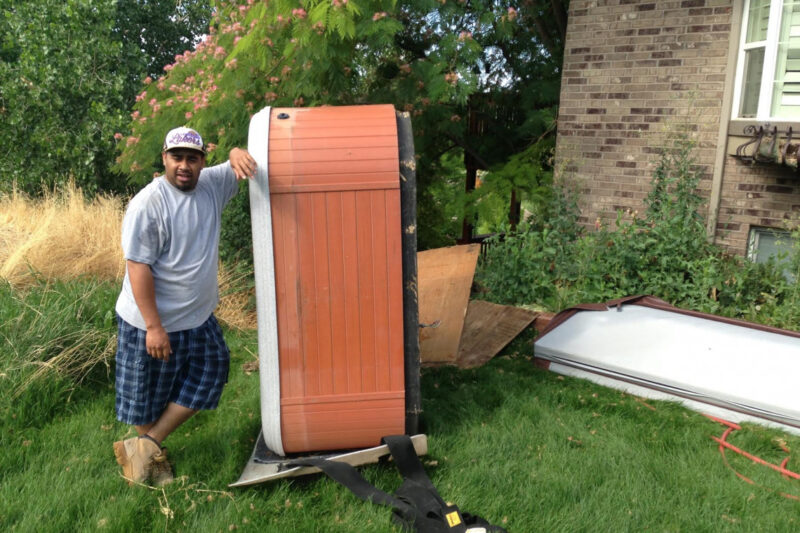
Share Post:
Moving a hot tub is not an easy task. It involves dealing with heavy weight and large dimensions, which makes it challenging. If you’re considering moving it, it’s important to understand the process, the effort required, and the potential risks.
This guide will help you get a clear picture of what it takes to safely relocate your hot tub.
What Is the Weight?
The weight of a hot tub can vary significantly based on its size and whether it’s empty or filled with water.
Small (2-3 people)
- Empty: 500 pounds
- Filled: 3,000 pounds
Medium (4-5 people)
- Empty: Typically 750 to 900 pounds
- Filled: Ranges from 4,000 to 5,000 pounds
Large (6-8 people)
- Empty: Between 1,000 and 1,250 pounds
- Filled: Can reach up to 6,000 to 8,000 pounds
Extra Large (8-12 people)
- Empty Weight: Around 1,250 pounds
- Filled Weight: As heavy as 8,000 pounds
Drain the Water
Before moving, it’s crucial to drain all the water. The weight of the water can add thousands of pounds, making the tub nearly impossible to move safely without draining it first. Here’s everything you need to know about this step:
Why Draining Is Essential
- Weight Reduction: Water makes up the majority of the filled weight of a hot tub. For example, a medium model that holds about 500 gallons of water can add over 4,000 pounds just from the water. Draining the water is essential to reduce the weight and make the it manageable for moving.
- Preventing Damage: Moving one full of water can cause structural damage. The sloshing water can shift the weight unevenly, increasing the risk of cracks or other damage during the move.
How to Drain the Water
- Disconnect Power: Before draining, ensure it is turned off and disconnected from the power source to avoid any electrical hazards.
- Use the Drain Valve: Most come with a built-in drain valve. Attach a garden hose to the valve, open it, and let the water drain out. This process can take a while, depending on the size of the hot tub.
- Submersible Pump: For faster draining, you can use a submersible pump. This device can significantly speed up the process by pumping the water out quickly, often within 10-15 minutes.
- Wet-Dry Vacuum: After most of the water is drained, use a wet-dry vacuum to remove any remaining water in the pipes and jets. This ensures that no water is left inside, which could cause issues during transport.
Important Considerations
- Proper Disposal: Ensure that the drained water is directed to a proper drainage area. Avoid flooding your yard or nearby areas, which could lead to unwanted water damage.
- Cleaning After Draining: Once the water is drained, it’s a good idea to clean the inside of the hot tub. Wipe down the interior surfaces to remove any dirt or debris. This not only helps in maintaining but also prevents any potential scratches or damage during the move.
Avoid Draining Mistakes
- Don’t Drain Too Fast: Draining too quickly without considering where the water will go can lead to flooding. Ensure that the drainage area can handle the water volume.
- Check the Weather: Avoid draining it during heavy rain or freezing conditions. Cold temperatures can cause any residual water to freeze, leading to potential damage.
Get the Tools
To move a hot tub safely, having the right tools is essential. Without proper equipment, the risk of injury or damaging the hot tub increases significantly. Here’s everything you need to know about the tools required:
Moving Dollies
- Purpose: Moving dollies are crucial for transporting heavy items. These wheeled platforms allow you to move the hot tub smoothly across flat surfaces.
- Type: It’s recommended to use two strong furniture dollies. Place one under each end to balance the weight evenly.
Furniture Straps
- Purpose: Furniture straps help secure the item to the dollies, ensuring it doesn’t shift during the move. This is vital for maintaining control over the heavy load and preventing accidents.
- Use: Wrap the straps around and tighten them securely to hold in place during transportation.
Wooden Planks (2x4s)
- Purpose: Wooden planks are used to create leverage when lifting onto the dollies. They also help in sliding onto the dolly without damaging the bottom of the tub.
- Placement: Place the planks under the edges and use them to tilt the tub gently. This allows the dollies to be positioned underneath with minimal effort.
Moving Blankets
- Purpose: Moving blankets protect the surface from scratches and other damage during transport. They also provide padding between the hot tub and any surfaces it may come into contact with.
- Use: Wrap the hot tub in moving blankets, especially on the corners and edges, to prevent any potential damage during the move.
Moving Truck or Trailer
- Purpose: A moving truck or flatbed trailer is necessary to transport.
- Loading: Use a ramp to roll the hot tub into the truck or trailer. Ensure the ramp is sturdy and can support the weight.
Ramp
- Purpose: A ramp is essential for loading onto the truck or trailer. It helps in rolling without lifting it too high, which can be dangerous.
- Use: Secure the ramp properly to prevent slipping. Make sure the incline is gradual to avoid tipping the hot tub during the loading process.
Wet-Dry Vacuum
- Purpose: After draining the water from the hot tub, a wet-dry vacuum helps remove any remaining water from the pipes and jets.
- Use: Set the vacuum to “blow” to push water out of the jets, ensuring the hot tub is completely dry before moving.
Lifting Straps
- Purpose: Lifting straps assist in distributing the weight of the hot tub when lifting it with a team. They reduce strain on the individuals and make it easier to handle the hot tub.
- Use: Loop the straps around the hot tub and have each person grab a section of the strap, allowing for controlled lifting.
Lift with Help
Moving a hot tub is not a one-person job. Due to its weight and bulk, it requires a team of at least three to four people to move it safely.
Gather a Team
- Why You Need Help: A hot tub can weigh anywhere from 500 pounds to over 1,000 pounds when empty, and up to 8,000 pounds when filled. Attempting to lift this weight alone is dangerous and can result in serious injury. Having a team of people helps distribute the weight evenly and ensures better control over the movement.
- Team Size: At least three to four strong individuals are needed to safely lift and move the hot tub. The more people involved, the easier it will be to manage the weight and maneuver the hot tub through tight spaces.
Positioning
- Lifting Points: Position your team around the hot tub, focusing on key lifting points such as the corners and edges. Ensure that each person has a firm grip and is positioned to lift in sync with the others.
- Communication: Establish clear communication among the team members. Decide on a leader who will give the commands for when to lift, move, and set down the hot tub. This helps avoid sudden movements that could lead to dropping the hot tub or causing injury.
Lifting Technique
- Proper Form: Use proper lifting techniques to prevent back strain and other injuries. Bend at the knees, keep your back straight, and lift with your legs, not your back. This distributes the strain more evenly across your body.
- Lift Gradually: Lift the hot tub slowly and steadily to avoid sudden jerks that could throw off balance. Ensure everyone lifts at the same time and maintains control throughout the process.
Moving
Once the hot tub is lifted, place it carefully onto the moving dollies. Ensure the hot tub is balanced and secure on the dollies before moving it.
Loading onto the Truck
Roll the hot tub up the ramp and into the truck or trailer. Make sure the ramp is securely positioned and can support the weight of the hot tub.
Once inside the truck, secure the hot tub with straps to prevent it from shifting during transport. Place additional padding around the hot tub to protect it from any potential damage.
Handle Potential Problems
Moving a hot tub isn’t without its challenges. From navigating tight spaces to dealing with uneven terrain, several issues can arise during the move. Here’s how to handle these problems effectively:
Tight Spaces
- Doorways and Gates: Hot tubs are often larger than standard doorways and gates, making it tricky to maneuver them through tight spaces. Measure all entry points before the move to ensure it can pass through.
- Solution: If the model is too large, consider tilting it onto its side to fit through narrow spaces. Be sure to have enough people to help stabilize the hot tub and prevent it from tipping over.
Uneven Terrain
- Sloped or Rough Ground: Moving over uneven ground or a slope can be particularly challenging. The weight distribution may shift, increasing the risk of the hot tub tipping or getting damaged.
- Solution: Use plywood sheets or similar materials to create a stable, flat surface for the dollies to roll on. If the slope is steep, proceed slowly and have team members support the hot tub from both the top and bottom of the slope.
Weather Conditions
- Rain and Snow: Moving a hot tub in wet or icy conditions is dangerous. The ground can become slippery, making it difficult to maintain control of the hot tub.
- Solution: Avoid moving the hot tub in bad weather. If you must move it, ensure the path is cleared and dry. Lay down mats or other non-slip materials to provide better traction.
Obstacles
- Fences and Trees: Large obstacles like fences, trees, or even parts of the house can block the path. This is common in backyard moves.
- Solution: If possible, remove smaller obstacles or dismantle parts of the fence temporarily. For larger obstacles, consider hiring a crane to lift the hot tub over them.
Equipment Failure
- Dollies or Straps Breaking: If a dolly wheel breaks or a strap snaps, it can result in the hot tub tipping or falling, causing significant damage.
- Solution: Inspect all equipment thoroughly before the move. Have spare straps and ensure the dollies are rated to handle the hot tub’s weight. If something breaks during the move, stop immediately, reassess, and replace the faulty equipment.
Structural Damage
- Scratches or Cracks: Moving without proper padding can lead to scratches, cracks, or other structural damage.
- Solution: Use moving blankets and foam padding around the hot tub, especially on corners and edges, to protect it from damage. Handle it gently and avoid dragging it on hard surfaces.
Power Supply Issues
- Reconnecting Power: After moving, reconnecting it to the power supply can sometimes be problematic, especially if the electrical setup is different in the new location.
- Solution: Consult with an electrician to ensure the new location’s power supply is suitable. Double-check all connections before powering it on.
Stay Safe
Safety is the top priority. Given the weight and size, improper handling can lead to serious injuries or significant damage to the hot tub. Here’s how to ensure everyone stays safe during the move:
1. Use Proper Lifting Techniques
- Lift with Your Legs: When lifting the hot tub, always bend at the knees and lift with your legs, not your back. This reduces the risk of back injuries and allows you to handle the weight more effectively.
- Avoid Twisting: Keep your body straight and avoid twisting while lifting or carrying the hot tub. Twisting can lead to strains and other injuries.
2. Wear Protective Gear
- Gloves: Wear heavy-duty gloves to improve grip and protect your hands from splinters, sharp edges, or abrasions.
- Back Braces: If available, use back braces to provide additional support and reduce the strain on your back during lifting.
- Sturdy Footwear: Wear shoes with good traction to prevent slipping, especially if the ground is uneven or wet.
3. Communicate with Your Team
- Clear Instructions: Ensure everyone knows their role and what needs to be done at each step of the move. Clear communication is essential to coordinate lifting, moving, and setting it down.
- Use a Spotter: Assign a spotter to guide the team, especially when navigating through tight spaces or over obstacles. The spotter should also watch for any signs of strain or instability.
4. Plan the Route
- Clear the Path: Before moving, clear the route of any obstacles, such as furniture, rocks, or debris. This reduces the chances of tripping or having to make sudden stops.
- Measure Doorways and Gates: Double-check the dimensions of doorways, gates, and any other narrow passages to ensure it can pass through without difficulty.
5. Handle with Care
- Avoid Sudden Movements: Move it slowly and steadily. Avoid jerky or sudden movements that could destabilize the hot tub or cause it to slip.
- Never Move Alone: Never attempt to move it alone. Always have at least three or four people to help distribute the weight and keep control of the hot tub.
Consider Professional Help
- Expert Movers: If the model is particularly large, heavy, or located in a difficult-to-access area, consider hiring professional movers who specialize in relocation. They have the experience and equipment needed to move it safely.
- Crane Services: In some cases, you may need to hire a crane. While this adds to the cost, it ensures the item is moved without damage and reduces the risk of injury.
Be Prepared for Emergencies
- First Aid Kit: Keep a first aid kit nearby in case of any minor injuries.
- Know When to Stop: If anyone feels strained or if the situation seems unsafe, stop immediately and reassess. It’s better to take extra time than to risk injury.
FAQs
How many people are needed to move a hot tub?
At least three to four strong people are needed to safely move a hot tub. Having more people can make the process easier and reduce the risk of injury.
Can I move a hot tub by myself?
No, moving a hot tub by yourself is not recommended due to its heavy weight and large size. Attempting to do so can lead to injury and damage to the hot tub.
Do I need special tools to move a hot tub?
Yes, special tools like moving dollies, furniture straps, wooden planks, and a ramp are essential for safely moving a hot tub.
Can I move a hot tub without draining the water?
No, you must drain all the water before moving a hot tub. Moving a filled hot tub can cause damage and significantly increases the weight, making it dangerous.
How do I protect my hot tub during the move?
Use moving blankets to wrap the hot tub and prevent scratches. Secure it with straps to avoid any shifting during transport.
Last Words
Moving a hot tub is a challenging task that requires careful planning, the right tools, and a strong team. By understanding the weight of your hot tub, properly draining it, and gathering the necessary equipment, you can ensure a safer and smoother move.
Related Posts:



